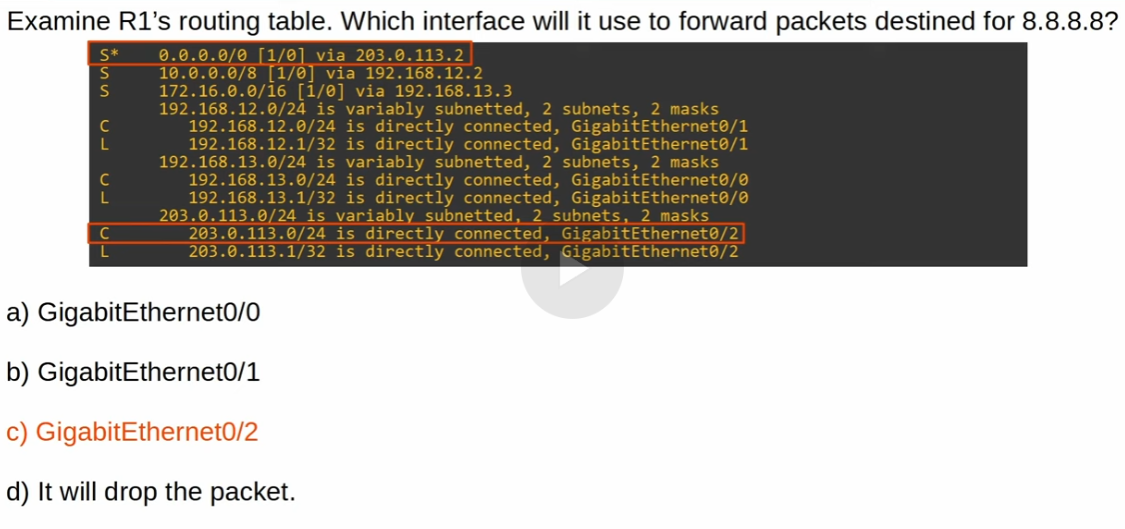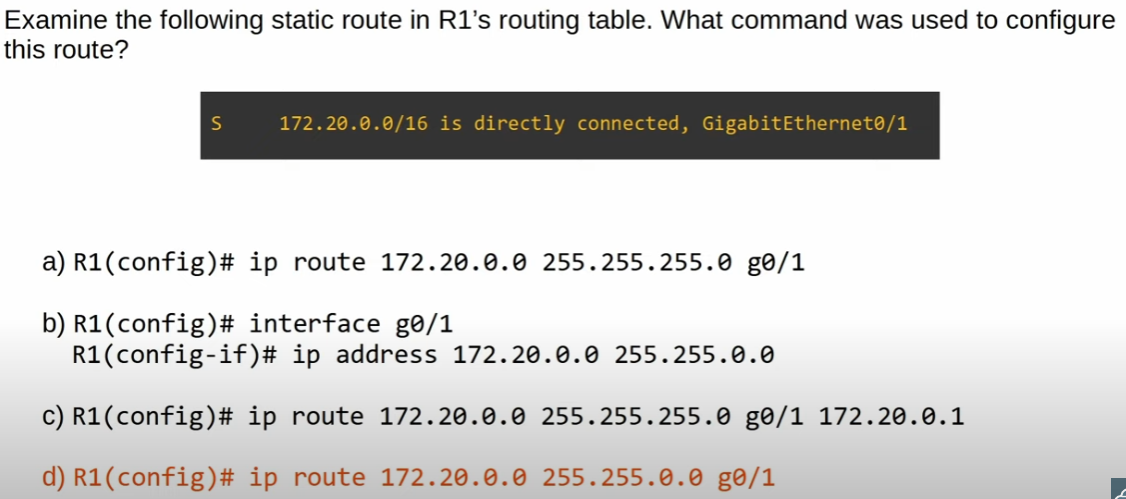Overview
- Connected and Local Routes
- Static Routes
- Static Route configurations
- Default routes
Routing Packets: Default Gateway

End hosts like PC1 and PC4 can send packets directly to destinatiosn in their connected network.
- PC1 is connected to 192.168.1.0/24
- PC4 is connected to 192.168.4.0/24
To send packets to destinations outside of a local network, endhosts must send the packets to their default gateway.
Linux stores this data in a text file.

The default gateway configuration is also called the default route.
- It is a route to 0.0.0.0/0 = all netmask bits are set to 0
- Includes all addresses from 0.0.0.0 to 255.255.255255.
- The default route is the least specific route possible (whereas a /32 route is the most specific route possible.)
- It is a route to 0.0.0.0/0 = all netmask bits are set to 0
End hosts usually have no need for more specific routes.
- End hosts just need to know that in order to send a packet outside of a local network, it should be send to the default gateway.
Say PC1 wants to send a packet to PC4 which resides outside of the LAN.
- Layer 3:
- Source IP: 192.168.1.10
- Destination IP: 192.168.4.10
- Layer 2: to learn R1 G0/2’s MAC address, PC1 will send an ARP request ot 192.168.1.1
- Source MAC: R1 G0/2
- Destination MAC: PC1 eth0 MAC
- Layer 3:
Once R1 receives the packet, it will de-encapsulate the L2 header/trailer, which exposes the L3 header.
Then it checks the routing table for the most-specific matching route.
Assume this is R1’s routing table.
There is no matching IP address for “Destination IP: 192.168.4.10”.
The packet is dropped.
There are two possible paths from R1 to 192.168.4.0/24.

Let’s consider the path PC1 -> R1 -> R3 -> R4 -> PC4.
Each router, therefore, needs two routes. A route to 192.168.1.10 and 192.168.4.10, ensuring two-way reachability.
If we initially configured the router’s interfaces, Cisco routers would have already configured connected routes from R1 to 192.168.1.0/24. And R4 with a connected route of 1982.168.4.0/24.
Other routes need to be configured manually.
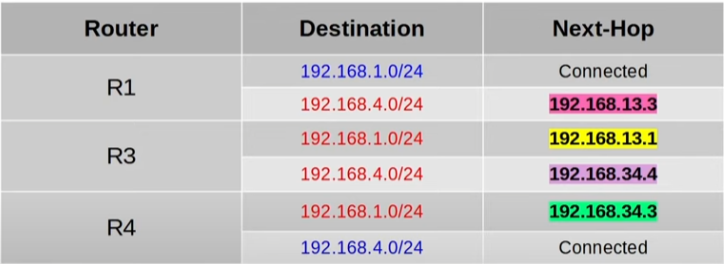
Static Route Configuration: (config)# ip route ip address netmask next-hop
Static Route Configuration R1
- The connected route is configured. So only need to one configuration.
1
2
3R1(config)#
R1(config)# ip route 192.168.4.0 255.255.255.0 192.168.13.3
R1(config)# do show ip route
Static Route Configuration R3
- Two configurations are needed.
1
2
3R3(config)# ip route 192.168.1.0 255.255.255.0 192.168.13.1
R3(config)# ip route 192.168.4.0 255.255.255.0 192.168.34.4
R3(config)# do show ip route
Static Route Configuration R4
- The connected route is configured. So only need to one configuration.
1
2R4(config)# ip route 192.168.1.0 255.255.255.0 192.168.34.3
R4(config)# do show ip route
Packet Traveling from PC1 to PC4

Static Route configuration with “exit-interface”
R2 wants to sent a packet to 192.168.1.0/24.
Specifies the exit interface
1 | R2(config)# ip route 192.168.1.0 255.255.255.0 g0/0 |
- Keep in mind that the routing table will state “192.168.1.0/24 is directly connected, GigbitEthernet0/0” even though it’s not”. – just a byproduct of an exit-interface that relies on Proxy ARP.
Static Route configuration with “exit-interface” and next-hop
R2 wants to sent a packet to 192.168.4.0/24 network.
Specifies the exit interface and next-hop
1 | R2(config)# ip route 192.168.1.0 255.255.255.0 g0/1 192.168.24.4 |
Default Route
- A default route is 0.0.0.0/0
- Least specific route and includes every possible destination IP address.
- If the router doesn’t have any more specific routes that match a packet’s destination IP address, the router will forward the packet using the default route.
- So a default route is used to direct traffic to the internet.
- More specific routes are used for destinations inside internal networks
- Traffic destinations outside of the internal network is sent to the internet.
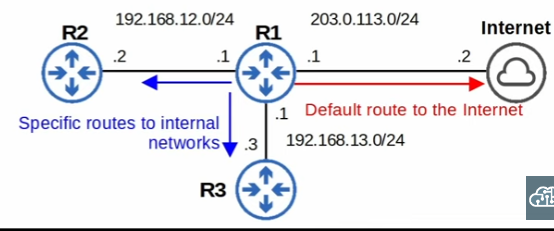
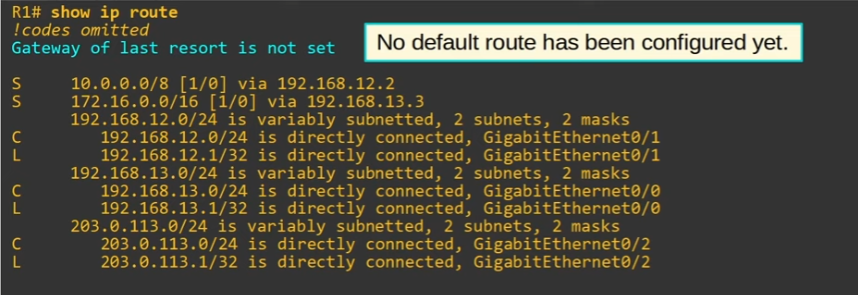
Configuring a default route.
1 | R1(config)# ip route 0.0.0.0 0.0.0.0 203.0.133.2 |

Questions
